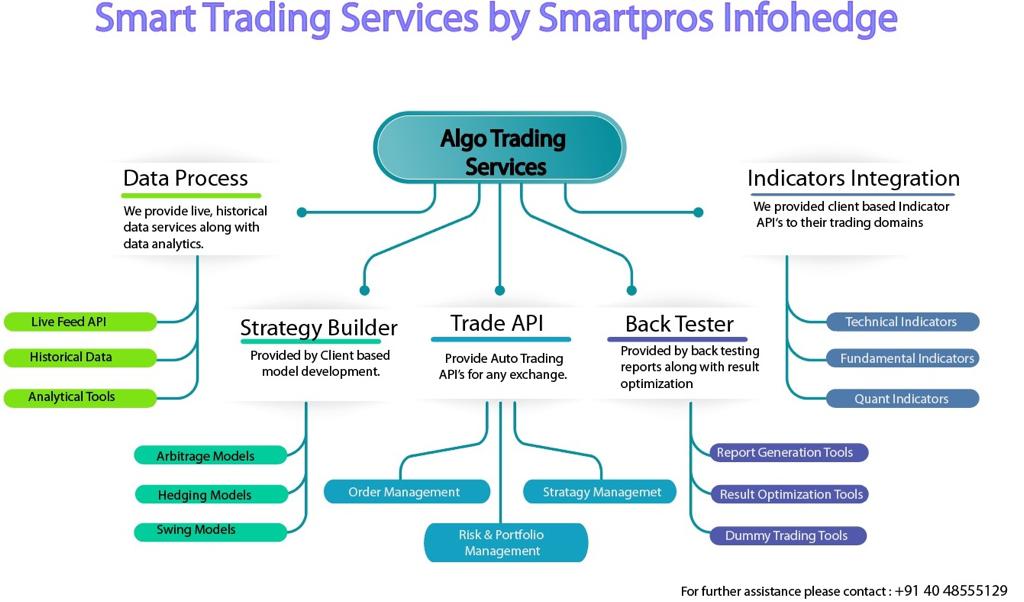
We will develop models for all Exchanges (NSE, NASDAQ etc), all Instruments (Equity, Forex, Commodity, and Derivatives etc), all Time Frames (Intraday, Week, Short Term, Long Term etc) and for all Market Participants (Arbitragers, Hedgers, Speculators etc) and also for all Market Types (Bullish, Bearish and Sideways)
Market Making
Exchange Arbitrages
Arbitrages
Statistical Arbitrage
High Frequency Trading models
Strategy Building
Greeks Dynamic Hedging
Portfolio Management
Risk Management
Hypothesis (Know about Market Insight)
Modeling (Input Analysis parameters )
Model validation( Back Test and Modifications)
Analysis & Strategy Building
Entry (Bid-Ask Spread, Leg Sequence, Liquidity etc)
Trade Management (Risk Parameters, Latest Market Info etc)
Exit (Profit or Stop)
Clean data
Align time stamps
Read Gigabytes of data
Extract relevant information
Handle missing data
Incorporate events, news and announcements
Code up the quant. Strategy
Code up the simulation
Wait a very long time for the simulation to complete
Recalibrate parameters and simulate again
Wait a very long time for the simulation to complete
Recalibrate parameters and simulate again
Wait a very long time for the simulation to complete

Back testing simulates a strategy (model) using historical or fake (controlled) data.
It gives an idea of how a strategy would work in the past.
It gives an objective way to measure strategy performance.
It generates data and statistics that allow further analysis, investigation and refinement.
It helps choose take-profit and stop loss.
Profit Loss
Mean, stdev, corr
Sharpe ratio
Confidence intervals
Max drawdown
Breakeven ratio
Biggest winner/loser
Breakeven bid/ask
Slippage
Allow easy strategy programming
Allow plug-and-play multiple strategies
Simulate using historical data
Simulate using fake, artificial data
Allow controlled experiments
Generate standard and user customized statistics
Have information other than prices
Auto calibration
Sensitivity analysis
Quick
Back testing generates a large amount of statistics and data for model analysis.
We may improve the model by
Regress the winning/losing trades with factors
Identify, delete/add (in)significant factors
Check serial correlation among returns
Check model correlations
The list goes on and on……